Having an iPhone and a Windows PC can seem like a compatibility nightmare. It’s just drilled into our minds, “Apple devices don’t play well with others.” That has to be the farthest thing from the truth, though.
Transferring data from your iPhone to Windows PC or even your Windows PC to your iPhone isn’t all that daunting. The same goes for your iPhone photos. In fact, there are several ways you can transfer photos or videos from your iPhone to your Windows 11 PC.
Transferring Photos Using 'iCloud Photos'
Apple’s cloud service iCloud makes it eerily easy to transfer photos from your iPhone to your PC if you have iCloud Photos on from your iPhone. iCloud Photos automatically uploads all photos and videos from your iPhone to the cloud and they are available on all your Apple devices, icloud.com, and even your Windows 11 PC. They update in real-time and are in sync across all devices.
If you don’t use the iCloud Photo Library, you can start using it now. Open the Settings app on your iPhone and go to the option for ‘Photos’.

Then, enable the toggle for ‘iCloud Photos’. But your iCloud account must have enough storage for your photos. If you don’t have enough storage, you’d have to upgrade your storage before you can enable and use this feature.

After you enable iCloud Photos, it can take some time for all your photos and videos to sync to iCloud depending on the gallery size and your internet speed.
Now, you also need the iCloud app on your Windows 11 PC. If you don’t have it, this guide covers everything you need to know to download and set up the iCloud app.
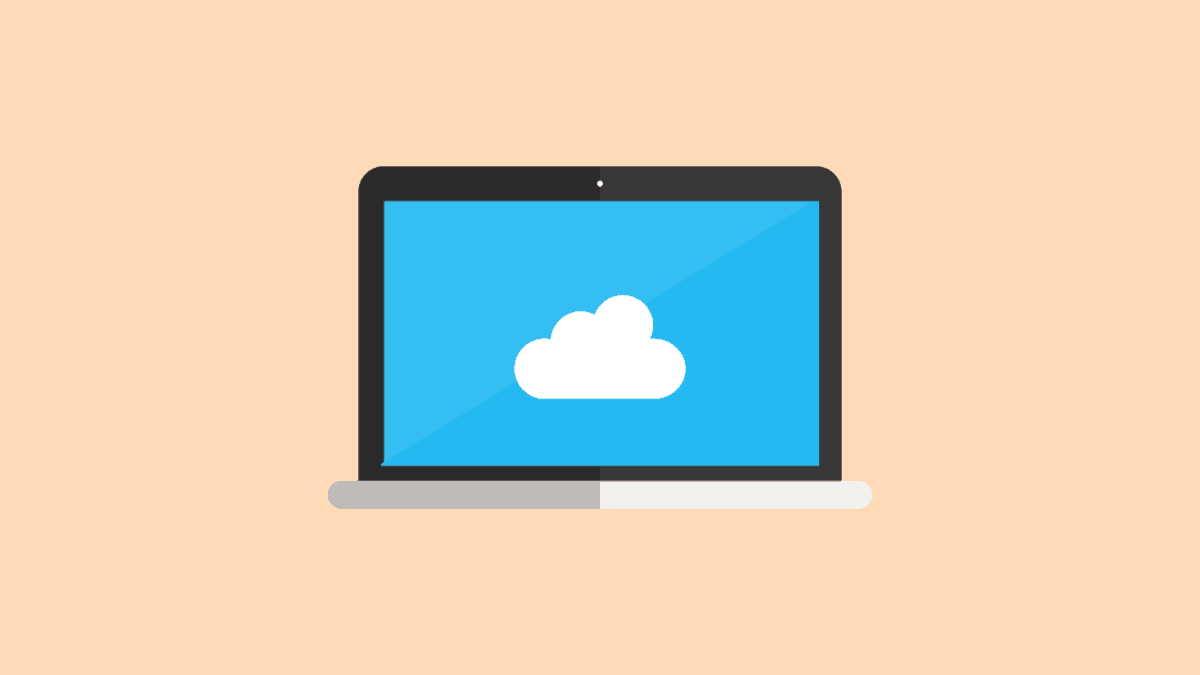
Once you’ve set up the iCloud app for Windows 11, open File Explorer on your computer. You can also use the Windows logo key + E keyboard shortcut to open File Explorer. Go to ‘iCloud Photos’ from the navigation pane on the left.

This provides you directly with all of your photos and videos from your iPhone on your Windows PC. iCloud Photos keeps all your photos updated, so you don’t even have to manually transfer your photos. You can access them at any you want.
But you can transfer the photos and videos to your PC from the cloud. Whether you’re running out of storage, or you’d like to have a backup (photos sync the same on all devices and when you delete it from one place, it deletes from everywhere), you can transfer them elsewhere on your PC.
You can copy the photos that are downloaded on your PC from the cloud. To download a photo on your device, double-click a photo to download it. When a photo is on the device, it’ll have a green tick against a white background to indicate its status instead of the cloud icon.
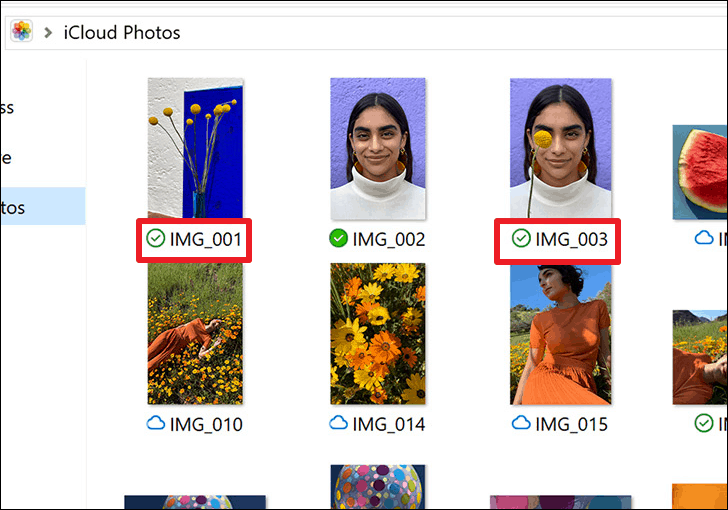
Another type of downloaded photo (permanently downloaded photos) will have a white tick against a green background.
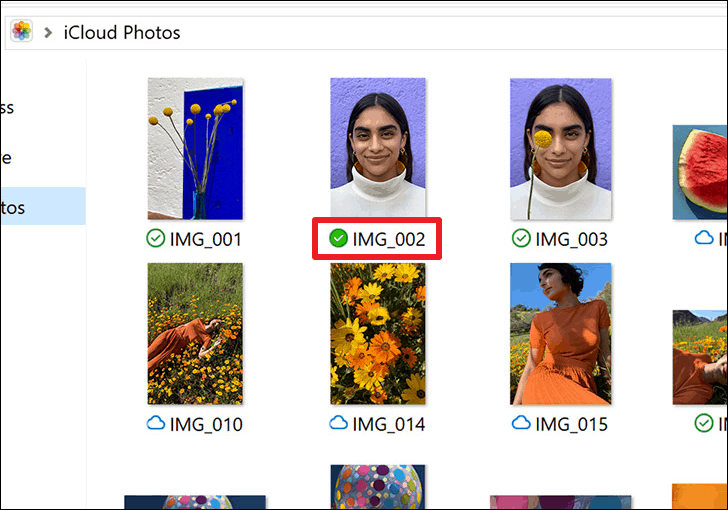
To permanently download a photo, right-click it and select ‘Always keep on this device’ from the menu. You can copy or move both types of downloads to your device.
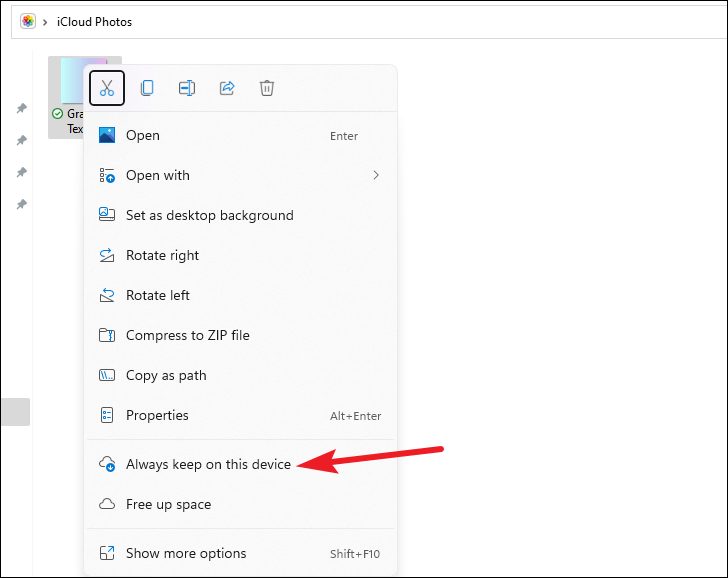
Just select the photo(s) and copy them. Then, go to the location and paste them. You can also move (drag and drop) or cut and paste the photos. But doing so will delete the photos from your iCloud Photos across all devices.
Transferring Photos Using Windows 11 'Photos' App
iCloud Photos isn’t your only way of transferring photos from your iPhone to Windows 11 PC. If you don’t use iCloud Photos, the Windows Photos app is available at your disposal, too. If you’ve transferred photos from a camera to your PC, you might already be very well-acquainted with the Photos app.
This form of transfer requires you to use a USB cable. You must also have iTunes version 12.5.1 or later installed on your computer.

Connect your iPhone to the Windows 11 computer using a USB cable. Make sure your phone is unlocked. If a prompt asking to trust the computer appears on your iPhone, tap ‘Trust’.
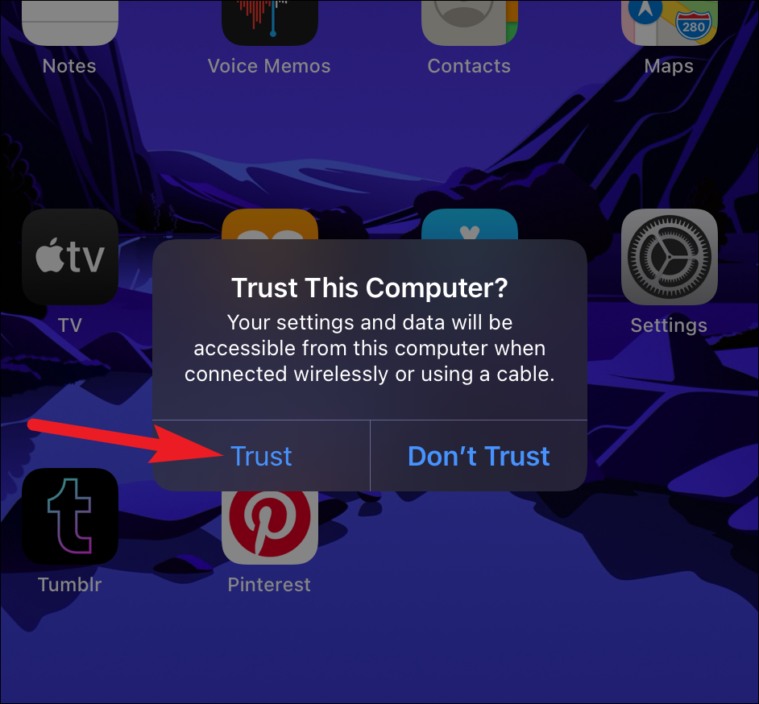
You might also have to enter your iPhone’s passcode. If you get another prompt alerting that the computer can access all your photos and videos, tap ‘Allow’ to continue.
An Autoplay notification will appear towards the notification area. Click it to open further options.
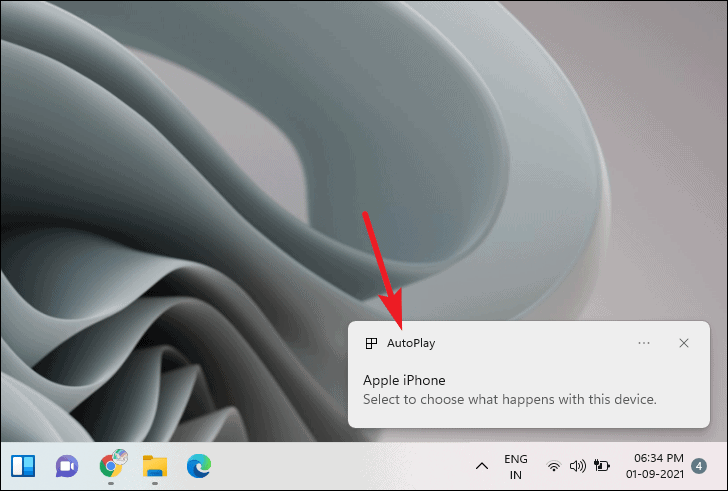
Then, click ‘Import photos and videos’ to import photos using the Windows 11 Photos app. The ‘Import Items’ overlay window will appear.
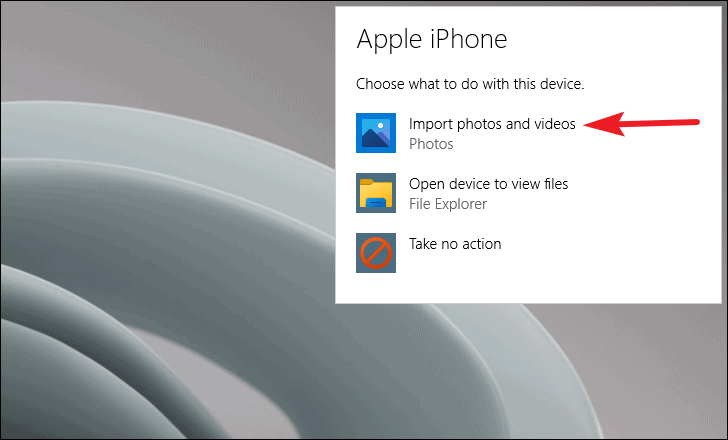
If you missed the autoplay notification, had previously selected some other option, or don’t want the computer to import photos every time you connect your iPhone, another way to import using the Photos app is to directly open the app on your computer. Go to the search option and search for ‘Photos’. Click the option for ‘Open’.
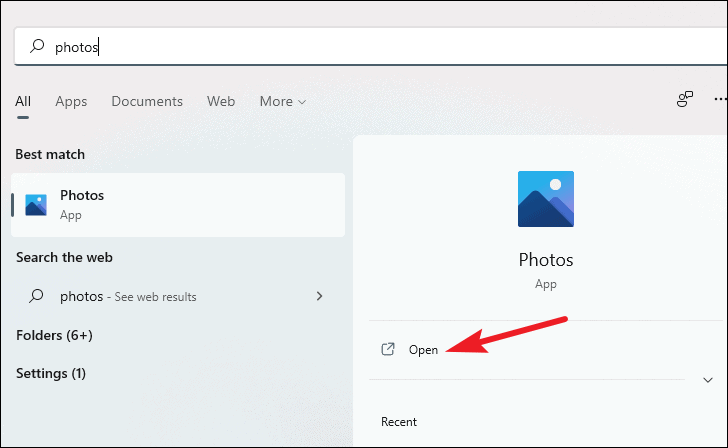
Windows 11 Photos app will open. Click the ‘Import’ option in the top-right corner.
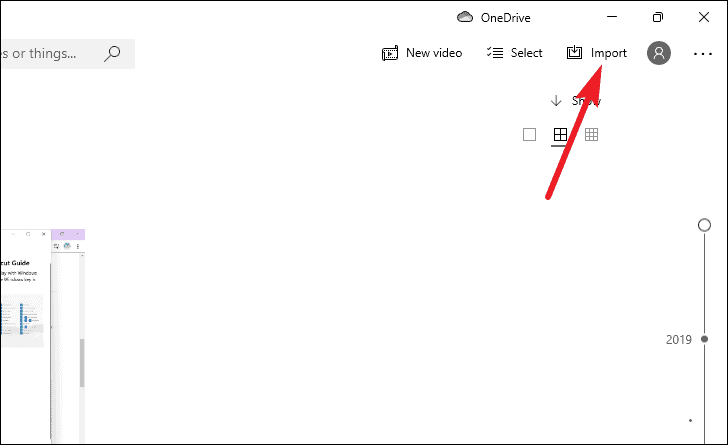
Few options will expand underneath. Click the ‘From the connected device’ option.
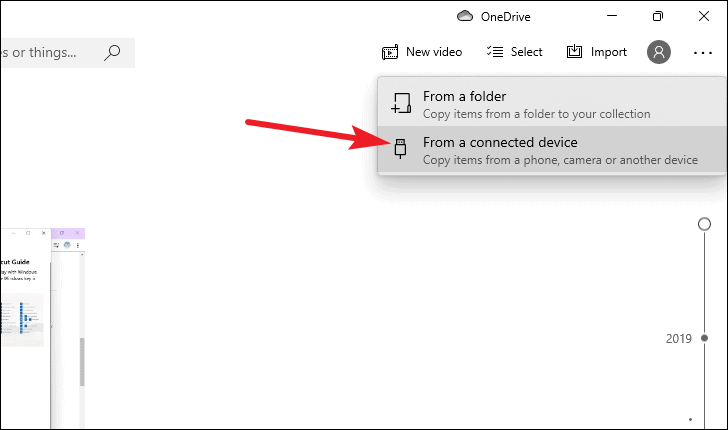
You’ll reach the ‘Import Items’ overlay window. Select the photos you want to import by clicking the tickbox on their thumbnail.
Other than selecting the photos individually, you can choose to select all photos or select the photos since the last import. Click the drop-down menu to select all photos or photos since the last import.
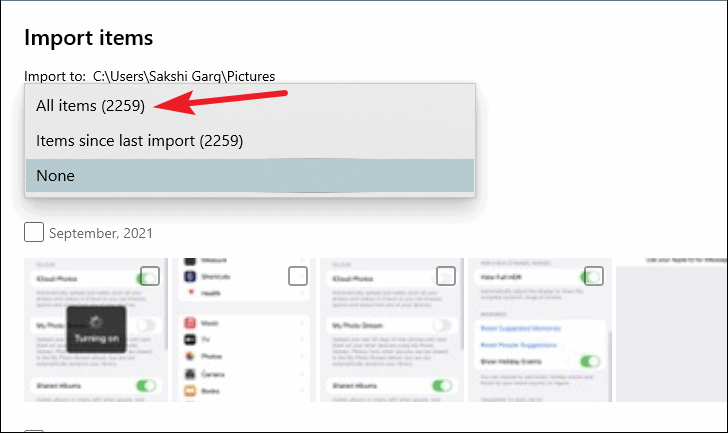
By default, the photos will be imported to the ‘Pictures’ folder. Click ‘Change destination’ to select another location.
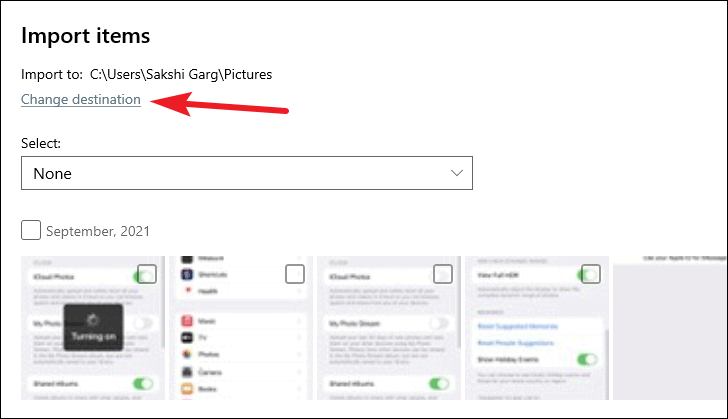
You can also choose to delete the photos from your iPhone after they are transferred to your computer. Click the tickbox for ‘Delete original items after import’.
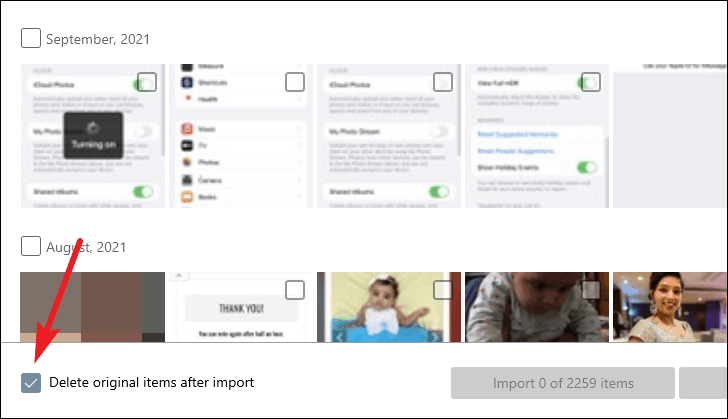
Finally, click the ‘Import [number] items’ button.

Transfer Photos Using File Explorer on Windows 11
If you’re better acquainted with the File Explorer and find the Photos app complicated, no worries. You can also transfer your iPhone photos from File Explorer in Windows 11. Again, for this method, you need to connect your iPhone to your PC using the USB cable. You must have iTunes version 12.5.1 or later installed on your desktop.
Connect your iPhone to your PC using the USB cable and open the File Explorer in Windows 11. You can use the keyboard shortcut Windows + E to open the File Explorer or open it from the taskbar. Then, go to ‘This PC’ from the navigation pane on the left. You can also directly go to ‘This PC’ from your Start Menu.

Your iPhone will appear as a new device under ‘Devices and Drives’ as an “Apple iPhone” or with your device’s name. Double-click to open it.
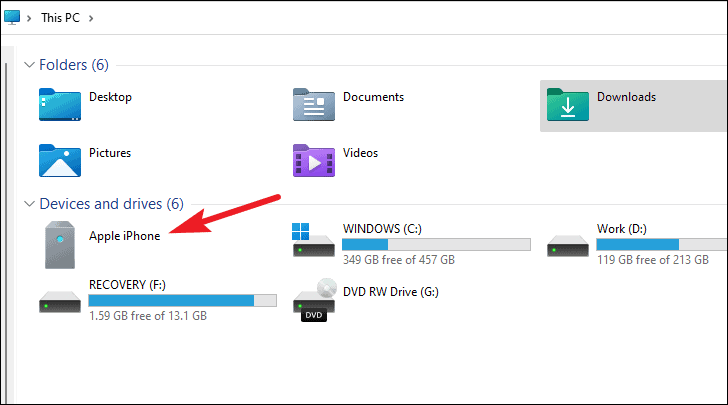
Then, double-click ‘Internal Storage’ to open it.
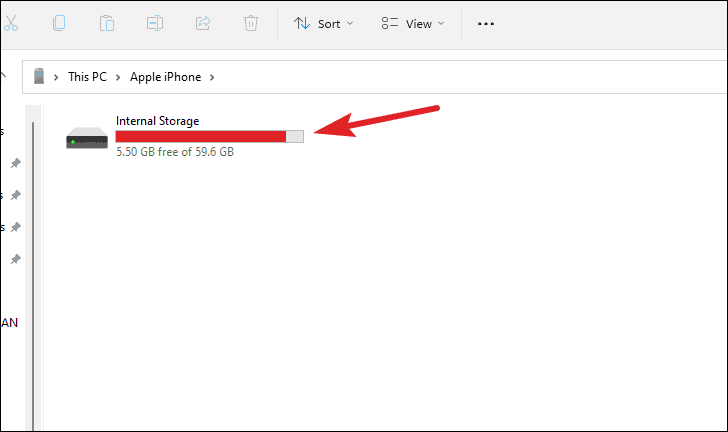
You’d see a folder named ‘DCIM’.
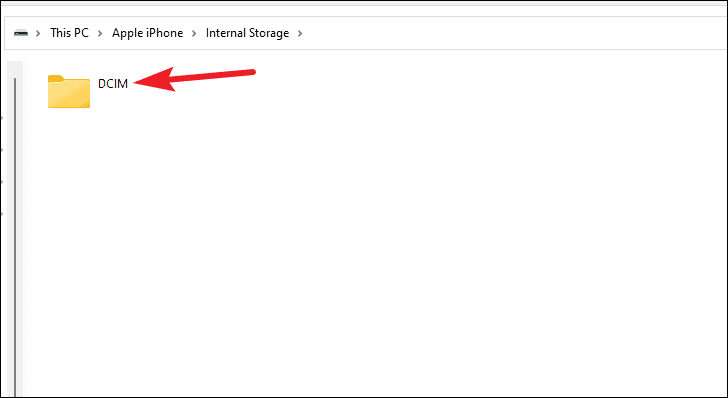
DCIM has further folders that have your photos and videos. You can copy/paste individual photos, or sub-folders, or the entire DCIM folder to your computer to transfer photos.
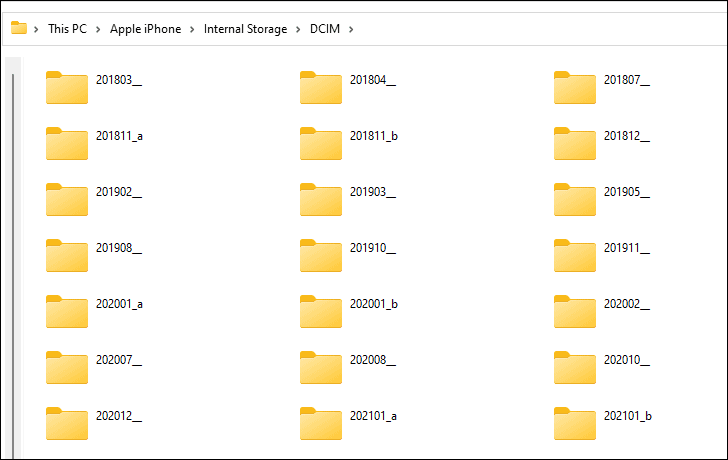
Instead of copying, you can also cut/paste or drag and drop the photos. But beware that this will remove the photos from your iPhone as you transfer them. You cannot transfer any photos back to your iPhone either by dropping them in the DCIM folder if you move them by mistake. You’d have to use iCloud Photos for that.
Are iPhone Photos Not Compatible in Windows?
iPhone photos use a variety of formats ranging from .jpg, .png, and .mov to HEIF and HEVC media types. Now, .jpg, .png, and .mov are the standard formats that you can easily view on your Windows 11 PC. But HEIF and HEVC aren’t compatible with all devices.
You can either convert these file types to compatible formats after transferring them to your PC. Or, you can make sure your iPhone converts these before any transfer.
Open the Settings apps on your iPhone and scroll down to ‘Photos’.

In the settings for Photos, scroll all the way down. Under ‘Transfer to Mac or PC’, choose ‘Automatic’.
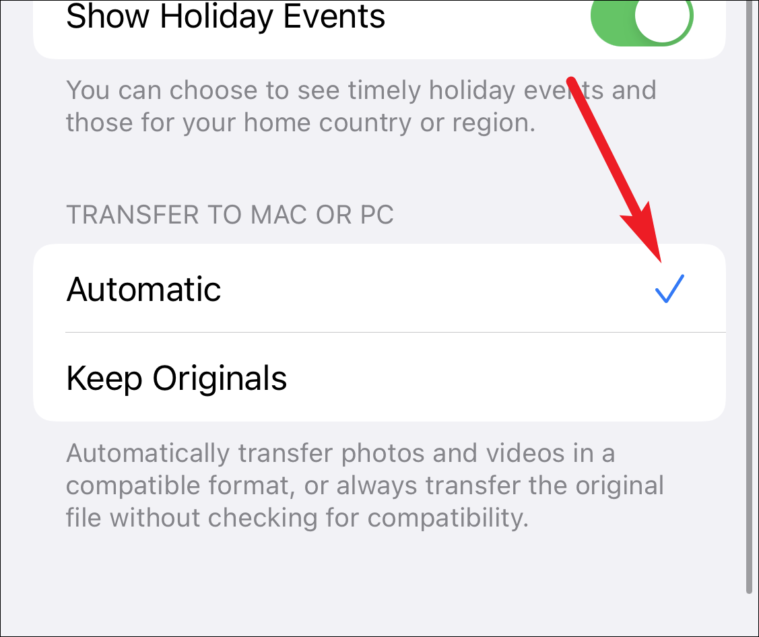
When you choose ‘Keep Originals’, any photos and videos captured in the HEIF and HEVC formats aren’t converted to JPEG, PNG, or MOV while transferring them to your PC. This only increases the number of steps you have to perform to open the said photos and videos on your PC. Other than that, this setting does not affect the quality of photos on your iPhone in any way. iPhone also won’t convert the photos and videos if your PC supports the formats.
So, there you see. iPhone does not play “not well” with others. If anything, it does the complete opposite. With multiple ways to transfer your photos to a Windows 11 PC, there’s something for everyone. Whichever way you find easy, you can go ahead with it.












Member discussion